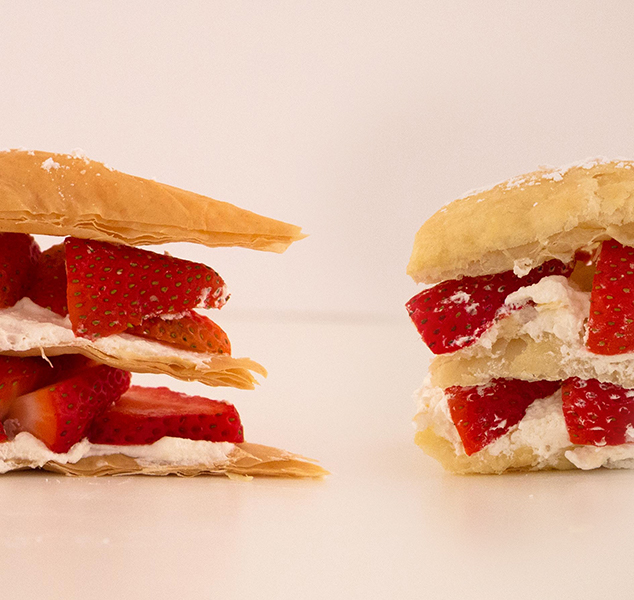
Real talk: we’ve never met a hot croissant we didn’t want to inhale. But sometimes we’re just not in the mood for all that heavy pastry … Or the calories that come with it. That’s when we turn to light, low-fat phyllo. Unlike puff pastry, Athens’ golden layers have a crunchy, airy texture that complements fruits, vegetables and all your favorite fillings. Read on for the differences between the two doughs, plus recipes you can use to phyllo-ify your favorite dishes.

LESS BUTTER. MORE VARIETY. WIN-WIN.
Puff pastry is created by sandwiching thick layers of butter between equally thick sheets of pastry, creating what chefs call a “laminated dough.” Phyllo lets you decide what goes between your sheets. A thin coating of melted butter works great, but light cooking spray, olive oil, egg white wash, or coconut oil can save extra calories. Phyllo and cooking spray come together to lighten up this take on a classic apple turnover.
PUFF PASTRY CAN’T DO THIS.
Want to add a little extra zip to your phyllo? Amp it up by putting dried herbs and spices between each sheet to create a uniquely zesty bite. Try a sprinkle of nutmeg and cinnamon in a sweet dessert, or a pinch of cayenne, chili powder or ranch seasoning on a savory snack. The options are limitless. Get started with this heirloom tomato & goat cheese pizza — an easy recipe that delivers bold flavors.

SHORT ON TIME? WE GOT YOU.
If you’ve only got a few minutes to create an impressive appetizer, purchase pre-made phyllo shells. These ready-to-serve shells allow you to enjoy the crunch of phyllo quickly — just spoon in your filling and garnish. For an easy dessert, these coffee mousse mini tarts are sure to be a hit.
 And there you have it. Now that you know the difference, start experimenting with this healthier swap. And don’t stop at puff pastry. Phyllo also makes a great stand in for wonton, pizza and pie dough.
And there you have it. Now that you know the difference, start experimenting with this healthier swap. And don’t stop at puff pastry. Phyllo also makes a great stand in for wonton, pizza and pie dough.
Want more phyllo inspiration? Follow us on Pinterest, Instagram and Facebook for tons of tasty recipes, cooking tips and all things phyllo!